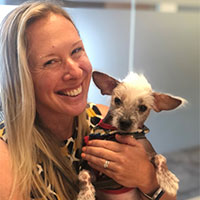Just like you would prepare yourself for surgery, you’ll want to help your dog prep for theirs, too. Preparing your dog for surgery and having a post-surgery plan from your veterinarian will help ensure that they have a safe and comfortable recovery. This way, you can get back to spending quality time with your loyal companion.

Before Surgery
When you schedule your dog’s surgery, it’s a good time to talk with your veterinarian about medications that can help them with their recovery. Some questions you may want to ask include:
- What medications are needed to manage pain after surgery?
- Would my dog benefit from medications to help deal with anesthesia-related vomiting?
- Will antibiotics be needed?
- What about medications to help my dog deal with any exercise restriction that’s necessary?
Your veterinarian will also walk you through surgery preparation topics like withholding food and will go over existing conditions or diseases your dog may have (as these can change the anesthesia protocol).
And don’t forget about the dreaded “cone” — if your dog will need one of those to help with recovery, now is the time to get an E-collar and begin to train your dog to accept it.
During Surgery
When you bring your dog to the veterinarian, they may give your dog medications before surgery to help prevent vomiting due to anesthetic medications, help reduce your dog's level of anxiety and pain, and help your dog relax. Once these medications have taken effect, your dog will be given anesthetics to provide general anesthesia (which will make your dog unconscious so they are not aware of the surgery). Depending on the type of surgery, additional pain control medications may be given.
Anesthesia is safer than ever because of the advancement of anesthetic drugs and monitoring equipment. A veterinary technician or nurse will be assigned to continuously monitor your dog, ensuring that they are kept safe and comfortable.
Once the surgery is complete, your dog will be monitored until they are able to sit up and are fully conscious. Additional medications may be given during this recovery period to ensure a smooth transition from being under anesthesia to being awake. Medicine for pain control may be provided to ensure they have a comfortable experience.
After Surgery
When you get your dog home, it’s important to get them eating as soon as your veterinarian recommends it. Let your veterinarian know if your dog is not eating after the recommended amount of time or if your dog is vomiting so your vet can figure out the best way to help your pet.
Make sure to follow your veterinarian’s instructions on when (and for how long) to give your dog their pain and other medications to help them return to their normal activities as smoothly as possible and without complications. It’s important to finish the entire course of medication, even if they seem like they’re feeling better, to help them fully recover from surgery.
A positive surgery experience from beginning to end will help reduce the level of fear and anxiety your dog may experience during future veterinary visits.
ZPC-00322R2
Important Safety Information: Use CERENIA Injectable subcutaneously for acute vomiting in dogs 2 to 4 months of age or either subcutaneously or intravenously in dogs 4 months of age and older. Safe use has not been evaluated in dogs with gastrointestinal obstruction, or those that have ingested toxins. Use with caution in dogs with hepatic dysfunction. Pain and vocalization upon injection is a common side effect. In people, topical exposure may elicit localized allergic skin reactions, and repeated or prolonged exposure may lead to skin sensitization. See full Prescribing Information.




